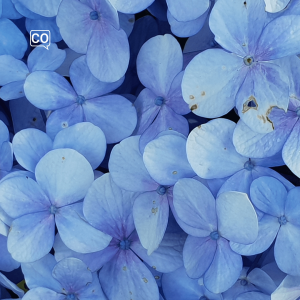Learn essential Spanish color words like azul, rojo, verde, and naranja while expressing preferences with phrases such as me gusta and no me gusta, focusing on everyday conversation about colors in clothing and objects.
Listening and reading
Start this class by listening to the audio and completing the corresponding exercises.
Vocabulary (15) Share Copied!
Exercises Share Copied!
These exercises can be done together during conversation lessons or as homework.
Exercise 1: Reorder sentences
Instruction: Make correct sentences and translate.
Exercise 2: Match a word
Instruction: Match the translations
Exercise 3: Cluster the words
Instruction: Classify the words into two groups depending on whether they are colors or names of objects that can be described with colors.
Colores
Objetos comunes
Exercise 4: Translate and use in a sentence
Instruction: Pick a word, translated and use the word in a sentence or dialogue.
1
Rosa
Pink
2
Naranja
Orange
3
Verde
Green
4
Blanco
White
5
Maquillarse
To put on makeup
Ejercicio 5: Conversation exercise
Instrucción:
- Describe los colores de la ropa. (Describe the colours of the clothes.)
- Describe el color de pelo de cada persona. (Describe the hair colour of each person.)
- Describe tu propia apariencia. (Describe your own appearance.)
Teaching guidelines +/- 10 minutes
Example phrases:
|
Los zapatos son blancos. The shoes are white. |
|
Tiene el pelo castaño. She has brown hair. |
|
La mujer lleva un traje amarillo. The woman is wearing a yellow suite. |
|
Ella tiene el pelo rubio. She has blond hair. |
|
Llevo una blusa morada. I'm wearing a purple blouse. |
|
Alice lleva botas negras. Alice is wearing black boots. |
|
Ella lleva un par de vaqueros. She is wearing a pair of jeans. |
| ... |
Exercise 6: Dialogue Cards
Instruction: Select a situation and practice the conversation with your teacher or fellow students.
Exercise 7: Multiple Choice
Instruction: Choose the correct solution
1. ___ el color azul para la pared de la sala.
(___ the blue color for the living room wall.)2. A mi esposa ___ mucho el vestido rojo que compró.
(My wife ___ really likes the red dress she bought.)3. No ___ la camisa negra que vi en la tienda.
(I don't ___ the black shirt that I saw at the store.)4. Nos ___ mucho maquillarnos antes de la reunión importante.
(We ___ really like to put on makeup before the important meeting.)Exercise 8: An afternoon of colors and tastes
Instruction:
Verb Tables
Maquillarse - Maquillarse
Presente
- yo me maquillo
- tú te maquillas
- él/ella/usted se maquilla
- nosotros/nosotras nos maquillamos
- vosotros/vosotras os maquilláis
- ellos/ellas/ustedes se maquillan
Gustar - Gustar
Presente
- (a mí) me gusta
- (a ti) te gusta
- (a él/ella/usted) le gusta
- (a nosotros/nosotras) nos gusta
- (a vosotros/vosotras) os gusta
- (a ellos/ellas/ustedes) les gusta
Odiar - Odiar
Presente
- yo odio
- tú odias
- él/ella/usted odia
- nosotros/nosotras odiamos
- vosotros/vosotras odiáis
- ellos/ellas/ustedes odian
Ir - Ir
Presente
- yo voy
- tú vas
- él/ella/usted va
- nosotros/nosotras vamos
- vosotros/vosotras vais
- ellos/ellas/ustedes van
Exercise 9: Expresar gustos y disgustos: (no) me gusta
Instruction: Fill in the correct word.
Grammar: Expressing likes and dislikes: (no) me gusta
Show translation Show answersno les gusta, te gustan, no os gusta, le gusta, no le gustan, me gustan, me gusta, os gusta
Grammar Share Copied!
It's not the most exciting thing, we admit, but it’s absolutely essential (and we promise it'll pay off)!
A1.24.2 Gramática
Expresar gustos y disgustos: (no) me gusta
Expressing likes and dislikes: (no) me gusta
Verb conjugation tables for this lesson Share Copied!
Maquillarse to put on makeup Share Copied!
Presente
| Spanish | English |
|---|---|
| (yo) me maquillo | I put on makeup |
| (tú) te maquillas | You put on makeup |
| (él/ella) se maquilla | he/she puts on makeup |
| (nosotros/nosotras) nos maquillamos | we put on makeup |
| (vosotros/vosotras) os maquilláis | You put on makeup |
| (ellos/ellas) se maquillan | They put on makeup |
Gustar to like Share Copied!
Presente
| Spanish | English |
|---|---|
| (yo) me gusta | I like |
| (tú) te gusta | You like |
| (él/ella) le gusta | he/she likes |
| (nosotros/nosotras) nos gusta | we like |
| (vosotros/vosotras) os gusta | You like |
| (ellos/ellas) les gusta | they like |
Odiar to hate Share Copied!
Presente
| Spanish | English |
|---|---|
| (yo) odio | I hate |
| (tú) odias | You hate |
| (él/ella) odia | he/she hates |
| (nosotros/nosotras) odiamos | we hate |
| (vosotros/vosotras) odiáis | You hate |
| (ellos/ellas) odian | they hate |
Don't see progress when learning on your own? Study this material with a certified teacher!
Do you want to practice Spanish today? That is possible! Just contact one of our teachers today.
Lesson Overview: Colours in Spanish
This lesson introduces you to basic and specific colour vocabulary in Spanish, focusing on how to express preferences and dislikes related to colours. You will learn common colour words, practice making statements about what you like or don't like using the verb gustar, and get familiar with everyday dialogues that include colour descriptions.
Key Vocabulary: Basic and Specific Colours
The lesson covers both
Basic Colours:
- el amarillo (yellow)
- el azul (blue)
- el blanco (white)
- el negro (black)
- el rojo (red)
- el verde (green)
and Specific or Compound Colours:
- el marrón (brown)
- el naranja (orange)
Expressing Likes and Dislikes
You will practise sentences with (no) me gusta to say whether you like or dislike something, as well as intensifiers like mucho. Examples include:
- Me gusta mucho el color azul porque es muy tranquilo.
- No me gusta la ropa marrón; prefiero la ropa negra o blanca.
- ¿Te gustan más los coches rojos o los verdes?
Useful Expressions and Grammar Highlights
The verb gustar works differently from English 'to like'. In Spanish, the thing liked is the subject, so phrases translate literally as "the blue colour pleases me." Remember the structure: me/te/le/nos/os/les gusta(n) + singular/plural noun.
You will also practise basic present tense conjugations of verbs related to personal preferences and habits, such as maquillarse (to put on makeup), amar (to love), and odiar (to hate), enhancing your ability to describe feelings about colours and objects.
Practical Dialogues
The lesson includes dialogues set in everyday contexts like clothing stores, talking about coloured pencils, or discussing car colours. This helps you learn to describe colours naturally and express preferences in conversation.
Cultural Note and Language Tips
Spanish frequently uses the definite article before colours (el azul rather than just azul) when referring to colours as nouns. Also, unlike English, the adjective must agree in gender and number with the noun it describes, for example, colores suaves (soft colours) and colores rosas (pink colours).
Useful phrases include:
- ¿Qué llevas hoy? – What are you wearing today?
- ¿Te gusta esta camisa azul? – Do you like this blue shirt?
- Me gusta mucho... – I really like...
- No me gusta... – I don't like...



























